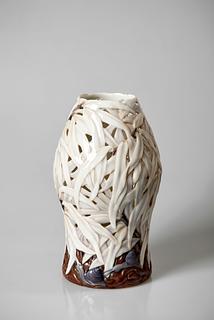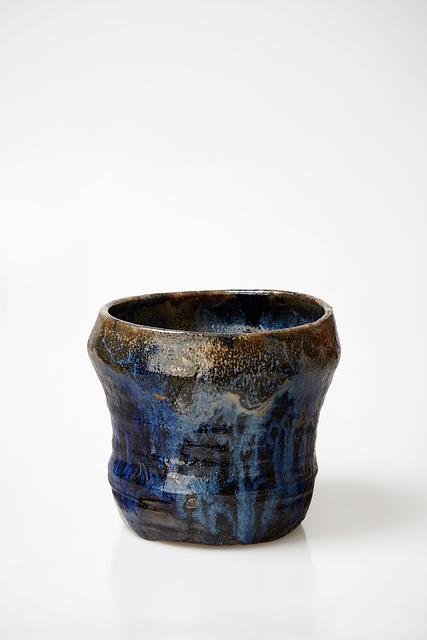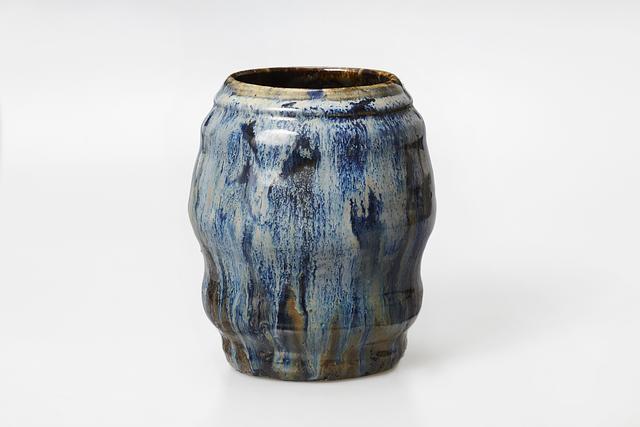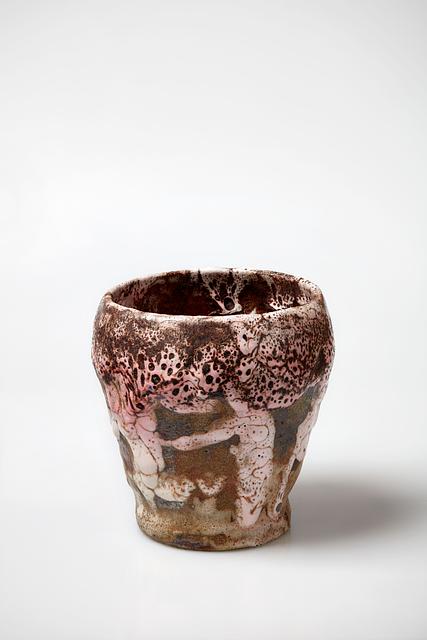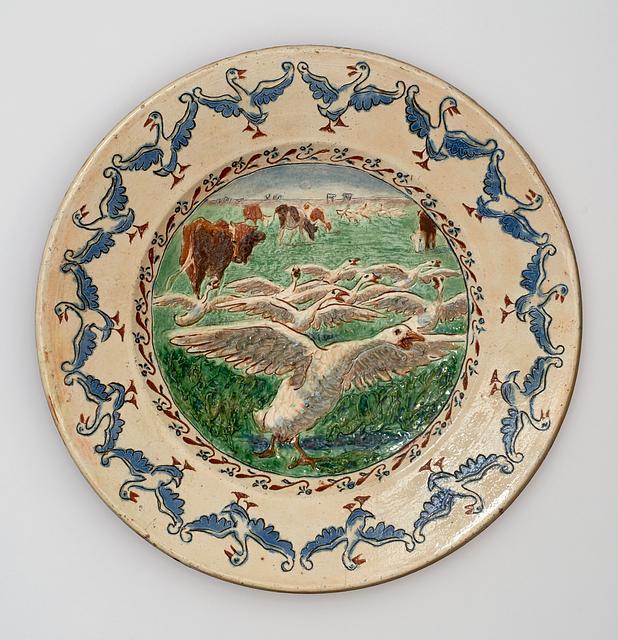Effie Hegermann-Lindencrone (1860–1945)
Vase, u.d.
Porcelain, Bing & Grøndahl
H: 24 cm
Inventory number MK 22
In 1886, Effie Hegermann-Lindencrone was contacted by the porcelain factory Bing & Grøndahl, which wanted her to help create and execute the magnificent Heron dinner set which was to be exhibited at the Nordic exhibition of Industry, Agriculture and Art in Copenhagen in 1888 and at the Exposition Universelle in Paris in 1889. Full of refined details, complex patterns and imagery done in blue underglaze paint and rich gold inlays, the Heron dinner set was a great success and paved the way for Effie Hegermann-Lindencrone’s many years of work at Bing & Grøndahl.
Around 1900, Effie Hegermann-Lindencrone began to develop a strongly personal style. With great originality, she created ceramic works at Bing & Grøndahl, ingeniously modelling the porcelain with flowers and leaves, seaweed, insects and animals. The shape of these works was particularly distinctive; their forms were often governed by the shape of the foliage and flowers used for inspiration.1 The vase in The David Collection is an excellent example of this approach.
The strongly pierced body of the vase is made up of thin, white, elongated leaves that spread out and intertwine. The leaves are outlined, creating an appealing relief effect. A dark brown glaze defines the base of the vase where snails crawl. In addition to the vase’s decoration, its naturalistic wealth of detail and simple colour scheme are also striking, as is the form, which Effie Hegermann-Lindencrone has made subordinate to the decoration. The pierced body makes it impossible for the vase to hold water, raising the point of whether it might more accurately be considered a sculpture.
Effie Hegermann-Lindencrone created her works herself – and always in porcelain. It was demanding, complicated and extremely time-consuming work, requiring her to shape the raw and damp porcelain and develop glazes capable of producing naturalistic effects on the surface. Her presentation and interpretation of plant and flower motifs was rich and multifaceted, even for the time around 1900 – a time of strong fascination with nature and the many forms it takes.2
Around 1900, Effie Hegermann-Lindencrone began to develop a strongly personal style. With great originality, she created ceramic works at Bing & Grøndahl, ingeniously modelling the porcelain with flowers and leaves, seaweed, insects and animals. The shape of these works was particularly distinctive; their forms were often governed by the shape of the foliage and flowers used for inspiration.1 The vase in The David Collection is an excellent example of this approach.
The strongly pierced body of the vase is made up of thin, white, elongated leaves that spread out and intertwine. The leaves are outlined, creating an appealing relief effect. A dark brown glaze defines the base of the vase where snails crawl. In addition to the vase’s decoration, its naturalistic wealth of detail and simple colour scheme are also striking, as is the form, which Effie Hegermann-Lindencrone has made subordinate to the decoration. The pierced body makes it impossible for the vase to hold water, raising the point of whether it might more accurately be considered a sculpture.
Effie Hegermann-Lindencrone created her works herself – and always in porcelain. It was demanding, complicated and extremely time-consuming work, requiring her to shape the raw and damp porcelain and develop glazes capable of producing naturalistic effects on the surface. Her presentation and interpretation of plant and flower motifs was rich and multifaceted, even for the time around 1900 – a time of strong fascination with nature and the many forms it takes.2
Published in
Published in
Unpublished;
Footnotes
Footnotes
1.
Pia Wirnfeldt and Christina Rauch Oxbøll (eds.): Natur – spor & spejlinger / Nature – traces & reflections, CLAY Keramikmuseum Danmark, Middelfart 2021, p. 30.
2.
Pia Wirnfeldt and Christina Rauch Oxbøll (eds.): Natur – spor & spejlinger / Nature – traces & reflections, CLAY Keramikmuseum Danmark, Middelfart 2021, p. 29.
